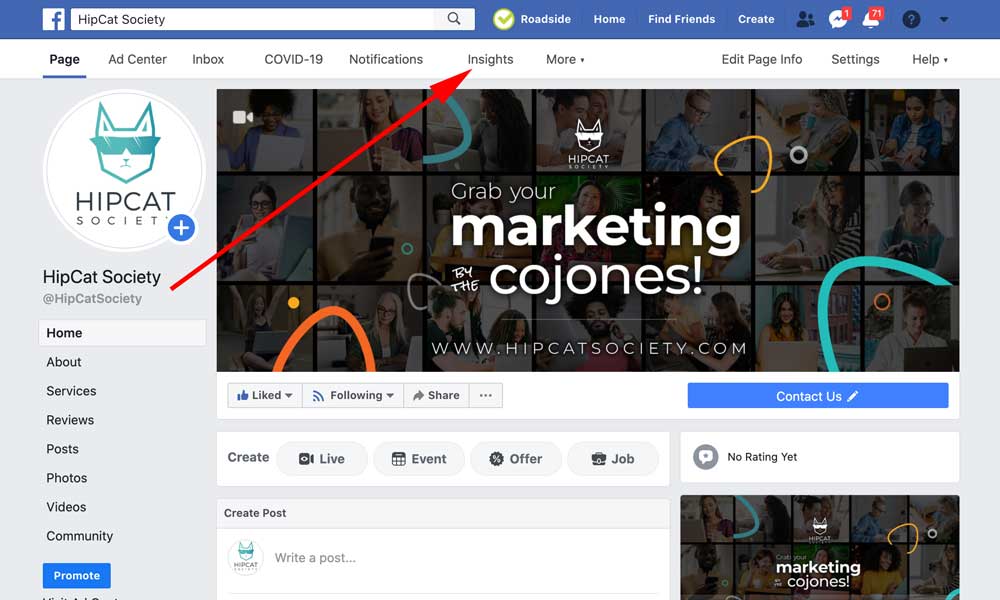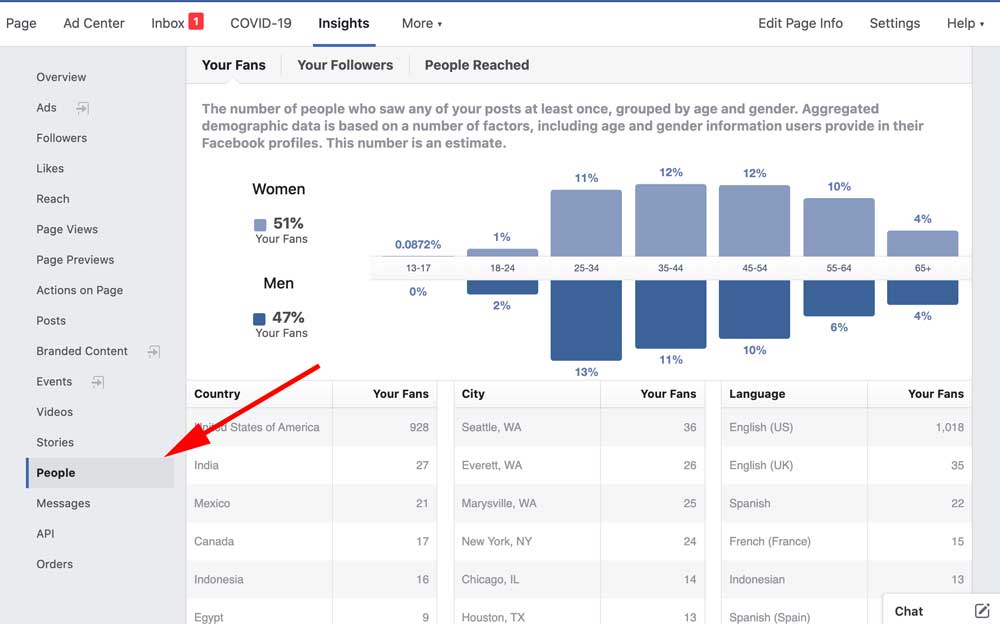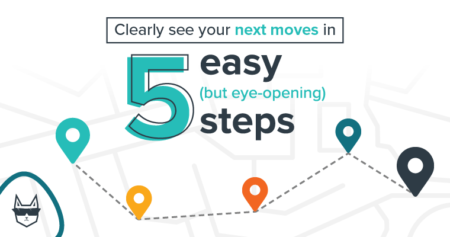Hey HipCats! Today, we’re going to talk about how to find your target audience and create your customer avatar.
It’s SO IMPORTANT to know WHO you’re selling to and understand everything about your customers (we’re talking about needs, fears, desires).
That’s where a target audience and avatar come in.
If you don’t have a target audience or avatar, that’s okay! In this blog post, we’re going to talk about:
- What a target audience is
- How to find your target audience
- What an avatar is
- How to create your avatar

Download Our Free Target Persona Worksheet
What is a target audience?
A target audience is a specific group of people you want to market your product to. They are the people who are most likely to buy your product.
Hence, you make more moolah (cha-ching!).
The target audience is defined through common characteristics (ie. age, income, etc.), and the more specifically you hone in on your target audience, the more opportunities you’ll have to sell your product or service.
How to find your target audience

It can take A LOT of research to narrow down your audience.
But never fear!
Follow these four steps to help pinpoint your target audience efficiently.
1. Use your existing customer base to gather insights
Most likely, you already have customers buying your products (smart cookies).
Take a look at your current customers and find the common characteristics between all of them.
- Why do they buy from you?
- What are their common interests?
- How old are they?
- What stage of life are they in?
- What are their spending habits? Do they have financial concerns?
- Where are they located?
- What language do they speak?
Finding those similarities and differences will make it easier to determine which target audience will benefit from your offering the most.
Don’t have this information available? Don’t worry!
Proceed to tip numero dos ?
2. Analyze your website and social media analytics
If you’re having trouble finding information about your current customer base, the analytics on your website and social media are excellent tools to dive into your demographic.
For example, Google Analytics contains a wealth of information about your audience. And the best part? It’s free!
Here’s exactly how you can use Google Analytics to identify key information about your audience and target personas:
Facebook is another excellent social media platform to further help you define your target market.
How?
Facebook Audience Insights … Opens in a new window to Facebook Audience Insights’ website… provides in-depth information about your existing Facebook audience, including what they like, demographics, location, etc.

Here’s how you can find important demographic information within Facebook Insights:
First, head on over to your Facebook page and click on “Insights”:

Next, click on the “People” tab on the far left:

Now you can see all sorts of important demographic information about your audience!
3. Analyze your competition
Do some research on your competition.
Ask yourself:
- Who is my competition targeting?
- How is their audience reacting to their offering?
- Are they going after the same customers?
- Who are their current customers?
Finding out these answers can help you determine if your competition’s strategies are working and creating engagement.
It could be an opportunity for you to venture into a specific target market that your competitors never thought of.
4. Keep refining your audience as you get more information
As you market your business and it grows, you’ll get a better insight on your audience and you may need to refine how to approach them.
The more information you have, the more specific you can be on your target audience. In turn, you’ll see those conversion rates skyrocket.
Tip alert: Gather more audience insight by using SparkToro … Opens in a new window to SparkToro’s website… . This handy-dandy tool can quickly find out exactly what your audience searches for.
You can get real-time results and know exactly what your ideal customer is thinking, reading, listening to, and much more. It’s scary and cool – at the same time!
But:
Choose your insights wisely as you only get 10 searches for free per month.
Once you’ve defined your audience, it’s time to create your customer avatar.
What is an avatar?
AKA the buyer persona. AKA the marketing persona.
You may have seen these terms out there, but they all mean the same thing:
A fictionalized character of someone who is most likely to buy from you.
Your avatar provides a deep understanding of your ideal customer. It helps you:
- Know which social platforms you need your business to be on
- Determine what problems and barriers your customers face
- Write copy that speaks to your ideal customer
- Anticipate your ideal customers’ needs and adjust accordingly
In other words:
If you want more customers, you must have an avatar. Period.
But how do you create your customer avatar, you ask?
How to create your own avatar.
![]()
1. Determine your avatar’s characteristics
Think of your avatar as creating a character. You’re going to determine:
- Her characteristics
- What makes her tick
- What she loves
- What scares her
- What excites her
You get to tell this avatar’s story – your own little story (it’s so much fun!). But, this isn’t a bestseller novel you’re writing … it’s a customer avatar, so you need to define the characteristics your ideal customer is going to have.
Based on the research on your target audience, you’re going to think beyond the basic demographics.
You’re going to decide your avatar’s:
- Job title and main responsibilities – I’m talking about writing down the decision she makes every day and how that influences the company she works for.
- Demographics – This is the bones of your avatar. Give her an age, income, gender, marital status, education, and where she lives.
- Psyche – Get in your avatar’s head and describe her habits, desires, fears, goals, attitude. Give her a personality.
- Pain points and challenges – What keeps your avatar up at night? What’s her deepest darkest desire? What’s getting in her way?
- Role in the purchasing process – What’s stopping your avatar from buying your product? What’s she looking for that would cause her to buy your product? Who’s the ultimate decider in purchasing?
- Reading habits and media use – Where does your avatar get her information? Does she use social media? What accounts? What magazines and books is she most likely to read?
2. Use the insights from identifying your target market
Remember all that research you’ve conducted above? Well, it’s time to put that into use!
The data you’ve gathered will help you determine your avatar’s personality and existence for your business.
Take a look at your data and then start narrowing down those traits and build your avatar.
3. Document and record your findings.
This is the fun part where you get to tell your avatar’s story. Bring her to life by:
- Giving her a name (alliteration is key to keep the avatar memorable; ie Buying Boater Betty)
- Finding an appropriate stock photo
- Creating a story illustrating her hopes, desires, and fears
Does it seem too complicated to write your avatar’s story?
We’ve got you! Download our The Ultimate Avatar Creator. it’s an easy-to-follow guide to get inside the hearts and minds of your dream customer.
P.S. It’s free!
Click here to download now. … Opens in a new window…
Get out there! Find your audience and create your avatar.
This is a MUST to successfully market your business.
You have to put yourself in your customers’ shoes, understand their pain points, fears, and desires. By doing this, you can better create content that will resonate with your audience and get you new customers.
Have you started creating your avatars? What are their names? Share your stories in the comments below ?


